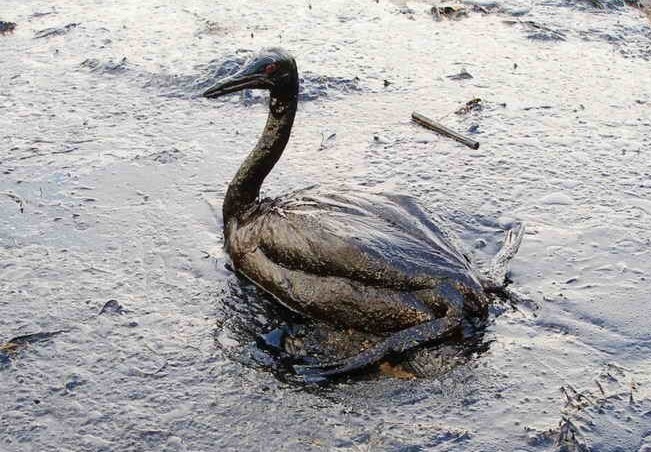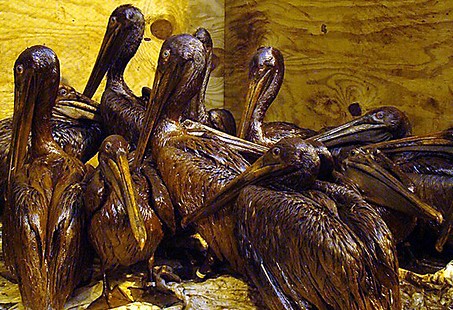
An oiled bird struggles to stay alive. Like many of the statements made by Exxon this week in Montana, this picture has nothing to do with reality on the Yellowstone River, it’s generic. (Photo by Igor Golubenkov/fotopedia)
Like Bill Murray in the movie Groundhog Day, we keep moving through the same sequence of events, disaster after disaster, until it really gets kind of annoying. This is the industry’s Standard Operating Procedure. First announcement: “We have a minor problem with ___________.” Fill in the blank: oil in the water, radiation in the water, methane in the water, water in New Orleans, whatever. Second Announcement: “The problem would now appear to be x orders of magnitude worse than we thought, but we have it completely under control.” Three: “It apparently will take us x (units of time, from days to millennia) to get the problem under control, but we will not rest until everything is like it was before.” Four: “No one could have predicted this.” Said over a distant, rising chorus of “I did!” “We did!” “Over here! We did too.” Today it’s the Yellowstone River. Continue reading
